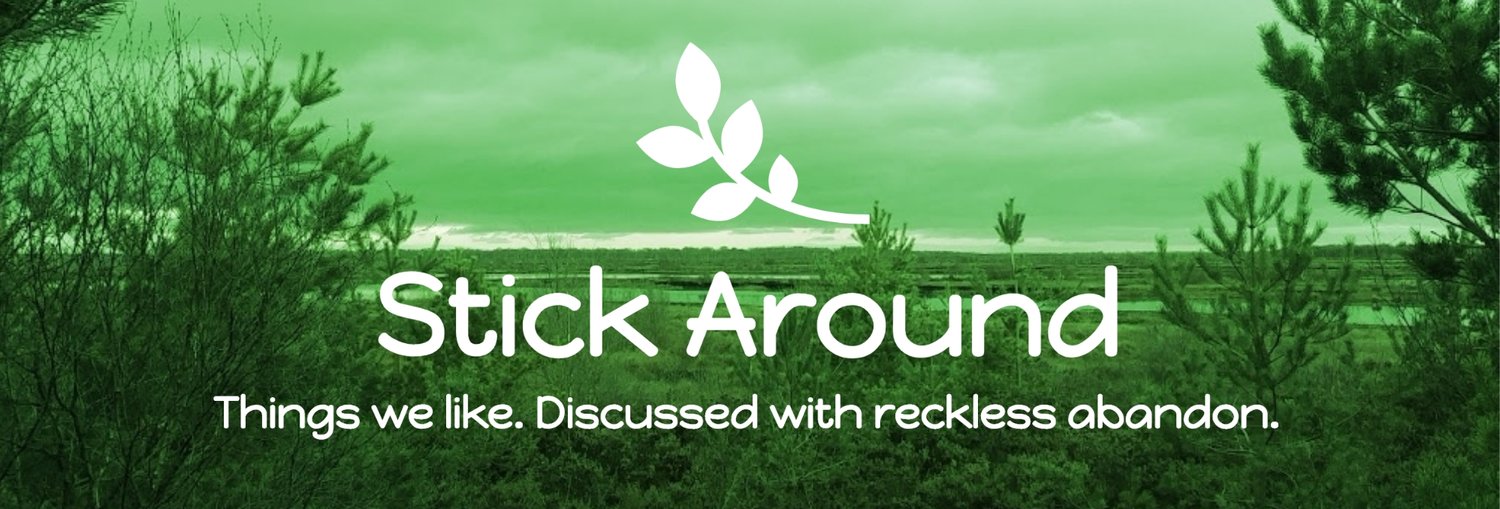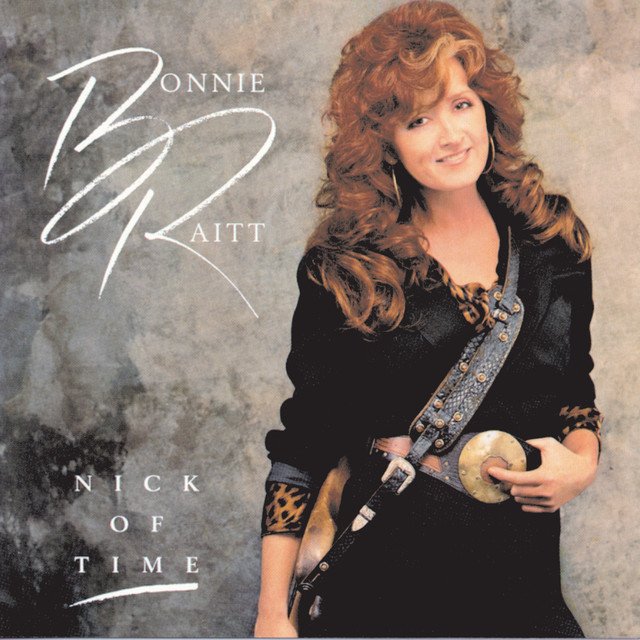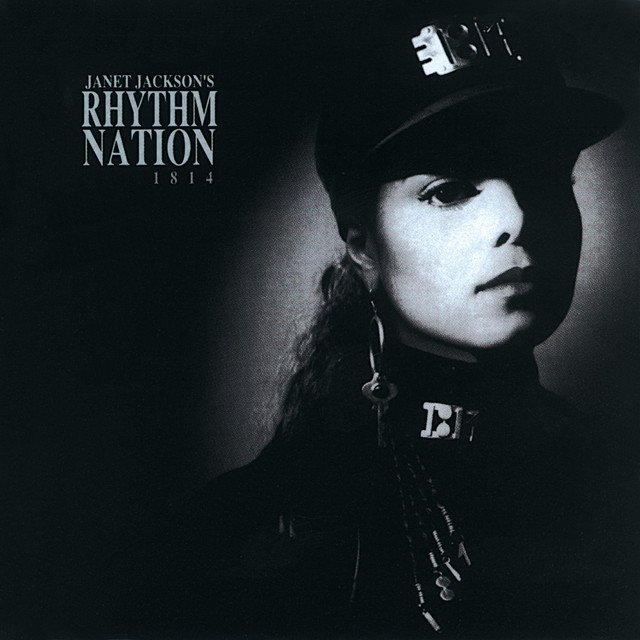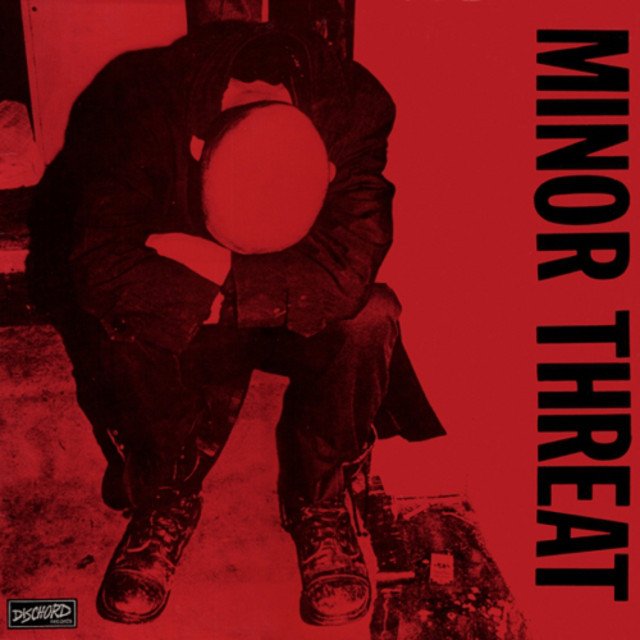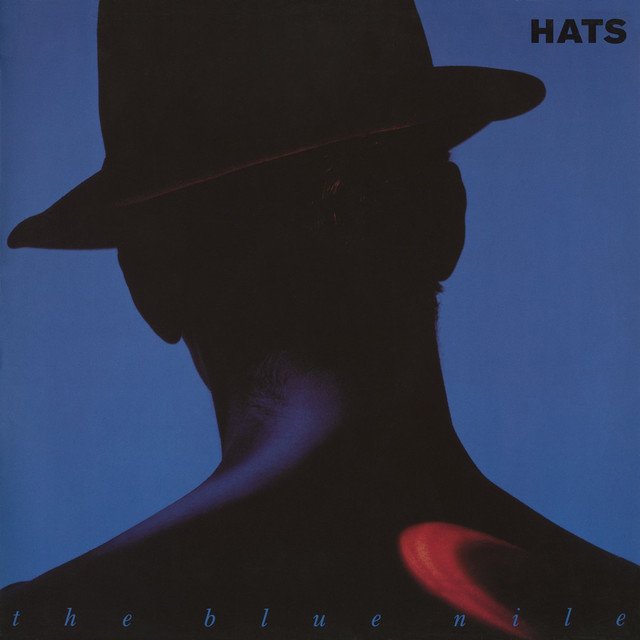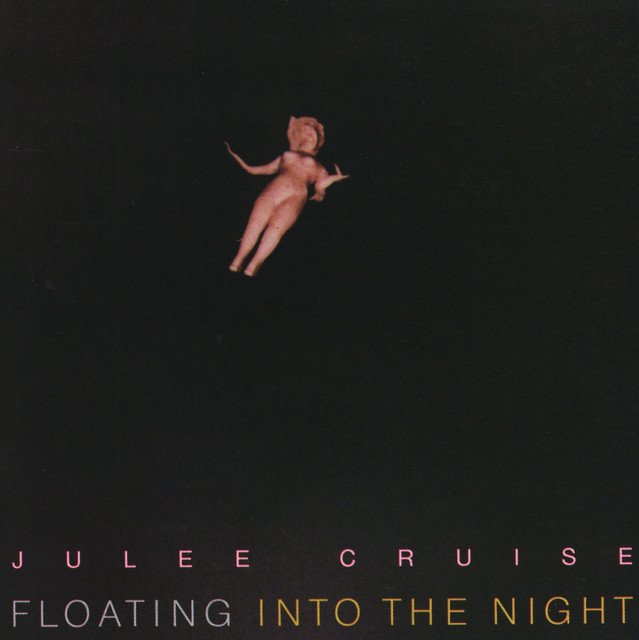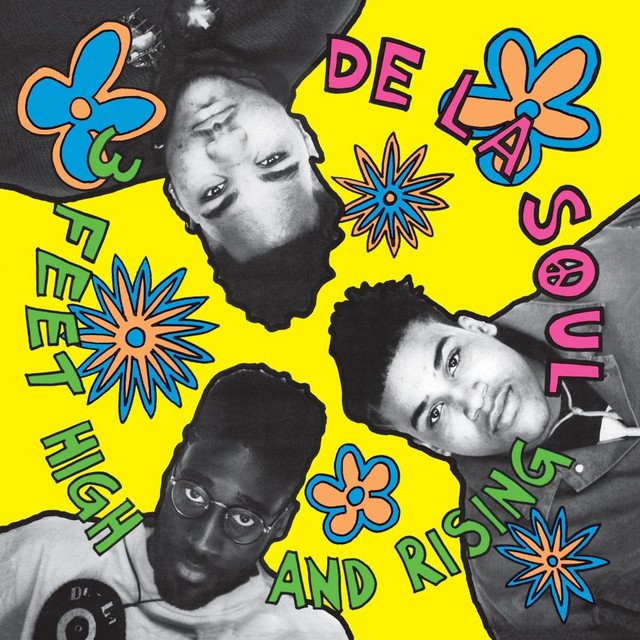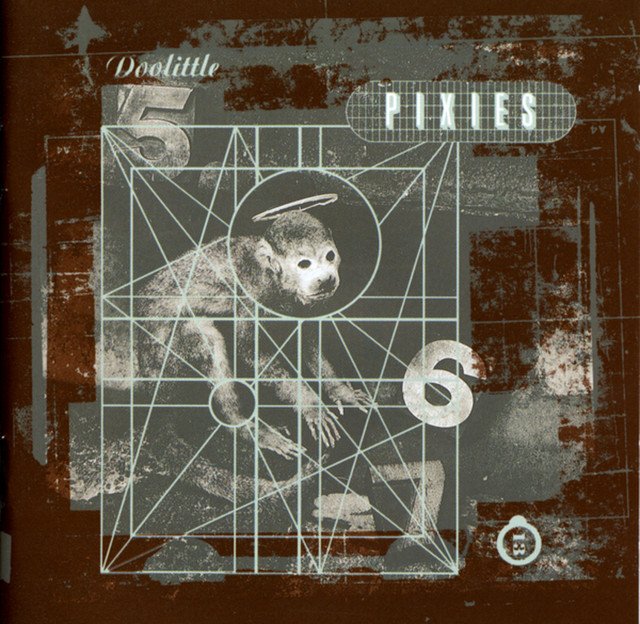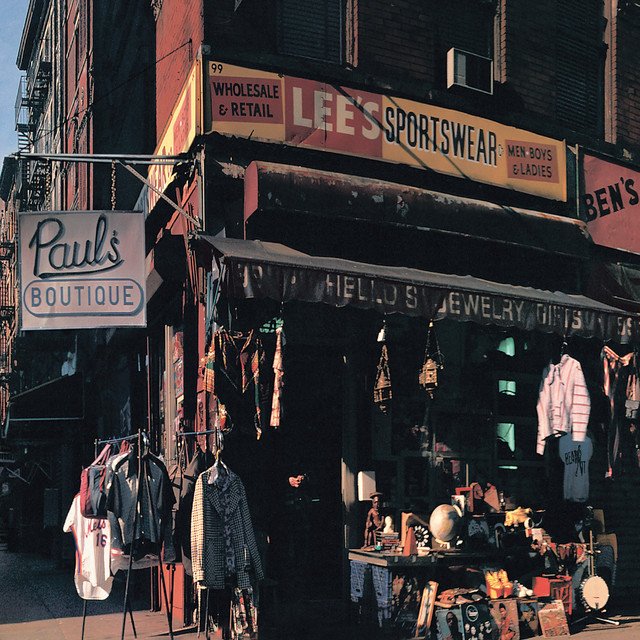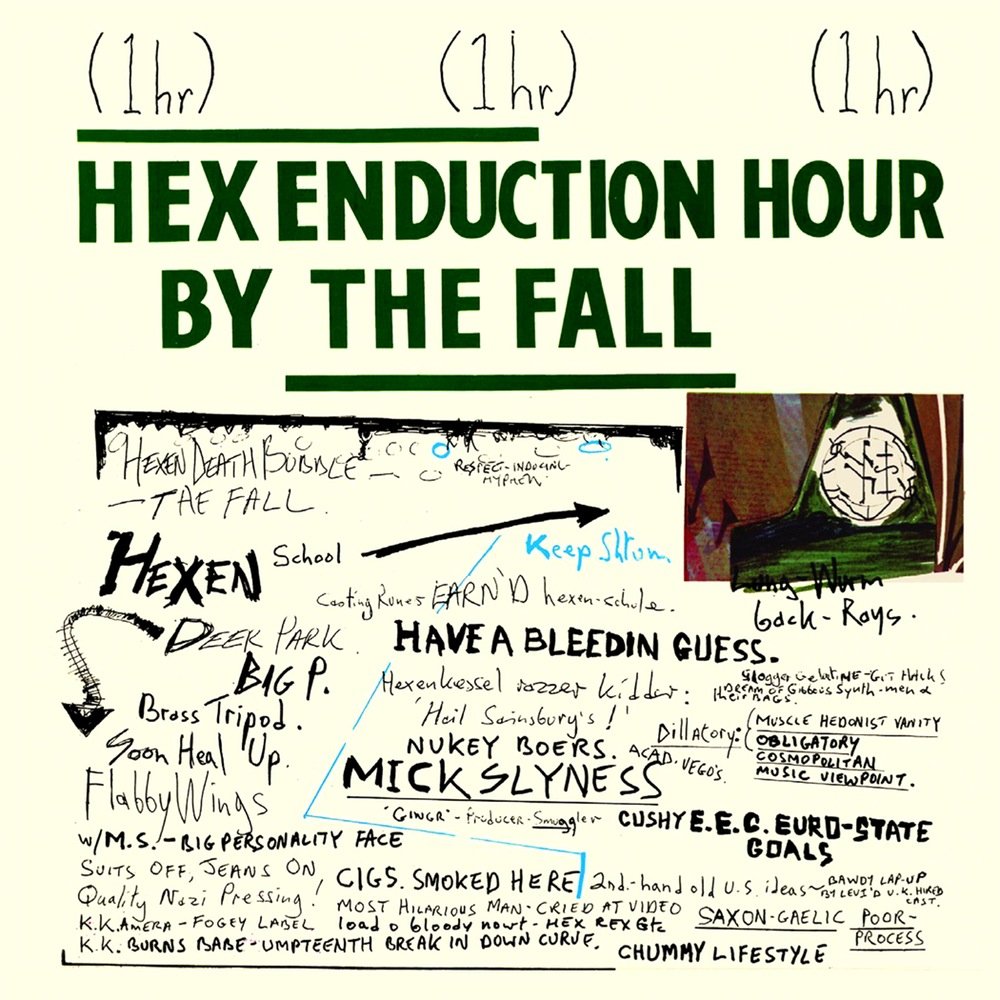1989 - Clive's Top Albums of Every Year Challenge
Over what will likely be the next few years I’m going to be ranking and reviewing the top 5 albums - plus a fair few extras - according to users on rateyourmusic.com (think IMDB for music) from every year from 1960 to the present. If you want to know more, I wrote an introduction to the ‘challenge’ here. You can also read all the other entries I’ve written so far by heading to the lovely index page here.
We’ve made it to the final year of the 80s, but what happened outside of music before the turn of the decade? Well, thousands were killed in Tiananmen Square as Chinese leaders took a hard line towards demonstrators, Mikhail S. Gorbachev was named Soviet President , the Berlin Wall fell after 28 years and the Game Boy was released.
Here’s what our trusty rateyourmusic.com users rank as the top 5 albums of 1989:
#1 The Cure - Disintegration
#2 Pixies - Doolittle
#3 The Stone Roses - The Stone Roses
#4 Beastie Boys - Paul’s Boutique
#5 NoMeansNo - Wrong
And here’s some others I’m grabbing from further down the list:
#6 Morbid Angel - Altars of Madness
#7 Julee Cruise - Floating into the Night
#14 De La Soul - 3 Feet High and Rising (also Pitchfork)
#20 Hats - The Blue Nile
Pitchfork’s top albums of the 80s includes some of the above, but also Minor Threat - Complete Discography at number 30, so we’ll add that in.
Finally, as usual, to add more female artists to the equation, I’ll be grabbing anything from 1989 from NPR’s list of the best albums of all time by female artists, as well as the same list as voted on by their readers. This year we’ve got a whole host of albums to throw into the mix:
Janet Jackson - Rhymth Nation 1814 (Also on Pitchfork’s best of the decade)
Queen Latifah - All Hail the Queen
Indigo Girls - Indigo Girls
Bonnie Raitt - Nick of Time)
Kate Bush - Sensual World
Madonna - Like a Prayer
Well, that’s 16 albums to cover, which I believe is a new record. No pun intended.
16. Nick of Time
Bonnie Riatt
“Nick of Time is the tenth studio album by the American singer Bonnie Raitt, released on March 21, 1989. It was Raitt's first album to be released by Capitol Records. A commercial breakthrough after years of personal and professional struggles, Nick of Time topped the Billboard 200 chart, selling five million copies, and won three Grammy Awards, including Album of the Year, which was presented to Raitt and producer Don Was. In 2003, the album was ranked number 229 on Rolling Stone magazine's list of the 500 greatest albums of all time, then was re-ranked at number 230 on the 2012 list.”" - Wikipedia
I’m not the biggest straight country guy, and Nick of Time isn’t about to change my mind. I can appreciate Raitt’s songwriting and vocal skills, and she certainly has a knack for melodies, but it’s still not doing a lot for me.
6.5/10
15. Like a Prayer
Madonna
“Like a Prayer is the fourth studio album by American singer-songwriter Madonna, released on March 21, 1989, by Sire Records. Madonna worked with Stephen Bray, Patrick Leonard, and Prince on the album, with her co-writing and co-producing all the songs. Her most introspective release at the time, Like a Prayer is a confessional record. Madonna described the album as a collection of songs about her mother, father, and bonds with her family. It was dedicated to Madonna's mother, who died when she was young.” - Wikipedia
The production has taken a step-up up since her debut, which we covered in 1983, sounding a bit less like a karaoke backing track, though it still sounds a bit Casio keyboard at points. Like a Prayer sets the tone with some funky flittering guitar work, and while the bass is still a little synthetic, the instrumental sections and overall sound really give the track a sense of scale and emphatically announce the arrival of a really solid pop album. Brass stabs and funky guitar riffs are tastefully lathered throughout, with tracks like Love Song (which features Prince) giving a slightlier edgier resbite to the general pop-fare. It’s not one with much depth to it, mainly because a lot of the music still sounds a bit soul-less, but Madonna’s melodies, and more interesting lyrics make it rise above her debut.
Song Picks: Like a Prayer, Love Song
7
14. Altars of Madness
Morbid Angel
“Altars of Madness is the debut studio album of Florida-based death metal band Morbid Angel. It was released on May 12, 1989 through Combat Records/Earache Records. The album was recorded in December 1988 at Morrisound Recording in Tampa, Florida. The album is one of the earliest examples of death metal and is considered to have helped pioneer the sound along with Possessed's Seven Churches in 1985 and Death's Scream Bloody Gore in 1987, and set a new precedent for heaviness and extremity, both musically and lyrically. It is one of the most celebrated albums in death metal history, and one of the most influential heavy metal albums of all time.” - Wikipedia
This influental business is all very good, but is Altars of Madness still any good? Yes. Though the mix is a bit thin, there’s a pleasing raw garage sound to the thing. Even David Vincent’s vocal sounds like it’s reverberating inside a box of breezeblocks. Peter Sandoval’s drumming is frenetic, and refreshingly off kilter compared to the artificial sound of many of the drums on today’s metal albums, where the perfect snare hit gets pasted across the whole track and other such trickery. This is punk death metal, maaaaan.
Song Picks: Lord of Fevers and Plagues, Suffocation
8/10
13. Indigo Girls
Indigo Girls
“Indigo Girls is the second studio album and first major label release by American folk rock duo the Indigo Girls. It was originally released in 1989 by Epic Records, and reissued and remastered in 2000 with two bonus tracks. Upon its release, the album received mostly positive reviews from critics, went gold after six months and eventually went platinum. The duo was nominated for a Best New Artist Grammy (losing to Milli Vanilli, who later vacated the award), and won one for Best Contemporary Folk Recording.” - Wikipedia
It feels like an age since we had some folk-rock so this is a more than welcome addition to the list. Amy Ray and Emily Saliers’ vocals harmonise beautifully (Michael Stipe’s backing vocals on track 3 are great too), injecting the album’s melodic choruses straight through into your veins (see opener Closer to Fine for what I mean). The acoustic guitar is so crystal clear it feels like it’s caressing your ears, with just the right amount of energy to accompany the prominent vocals, while never overpowering them.
This is just really great, melodic, accessible and heartfelt music.
Song Picks: Closer to Fine, Kid Fears
8/10
12. Rhythm Nation 1814
Janet Jackson
“Janet Jackson's Rhythm Nation 1814 is the fourth studio album by American singer-songwriter Janet Jackson, released on September 19, 1989, by A&M Records. Although label executives wanted material similar to her previous album, Control (1986), Jackson insisted on creating a concept album addressing social issues. Collaborating with songwriters and record producers Jimmy Jam and Terry Lewis, she drew inspiration from various tragedies reported through news media, exploring racism, poverty, and substance abuse, in addition to themes of romance. Although its primary concept of a sociopolitical utopia was met with mixed reactions, its composition received critical acclaim. Jackson came to be considered a role model for youth because of her socially conscious lyrics.” - Wikipedia
Growing up, I was a fan of the Michael & Janet Jackson duet ‘Scream’ on Michael Jackson’s History compilation. It had a kind of industrial and grimey riff to it. Rhythm Nation 1814’s heavier tracks are dominated by a similar sound, and they’re my favourites. The blunt social commentary works well with this angrier presentation, but falls flatter for me on some of the slower songs in the album’s second half, where it comes across as a bit cheesy. Thankfully this is only a couple of tracks among the album’s 20. The slower more personal songs such as Lonely and Come Back to Me are effective 80s ballads.
Black Cat wins the award for the most 80s sounding track on the album with a bass drum and snare drum like a battering ram, and a guitar riff that should come free with a really long wig, glorious.
Song Picks: Alright, Rhythm Nation, Black Cat,
8/10
11. All Hail the Queen
Queen Latifah
“All Hail the Queen is the debut album by hip-hop artist Queen Latifah. The album was released on November 28, 1989, through Tommy Boy Records. The feminist anthem, "Ladies First" featuring Monie Love remains one of Latifah's signature songs.” - Wikipedia
All Hail the Queen is old-school hip-hop at its best. Infectious beats, notable in particular for their unassuming but bloody fantastic basslines (see opener Dance for Me for a great example). This is the kind of thing you could put on at a house party and have the whole place grooving for its duration. As for Queen Latifah’s rapping, it has a great flow, and I like the rhymes. All Hail the Queen might not be as revolutionary in terms of its lyrical content as some of the decade’s more political hip-hop output, but the whole thing slaps from start to finish, and its a bona fide mood-lifter. When you combine this with the fact female rappers weren’t exactly a dime a dozen in 1989, and she was only 19 at the time of this album’s release, you get a pretty all round impressive piece of hip-hop history.
Also Ladies First is a superb feminist anthem.
Song Picks: Dance for Me, Latifah’s Law, Wrath of My Madness, Ladies First, Queen of Royal Badness, Evil that Men Do
9/10
10. Complete Discography
Minor Threat
“Complete Discography is a 1989 compilation album released by the American hardcore punk band Minor Threat on the band's own Dischord Records. As the name implies, it contains the band's entire discography at the time, including their three EPs, the Out of Step album and Flex Your Head compilation tracks.” - Wikipedia
Ok, it’s not technically an album, more a collection of EPs, but Pitchfork included it on their best albums of the 80s and they know more than me, so I’m counting it too. This punk-rock gem seems to have influenced all the music on Tony Hawk Skater 2’s soundtrack along with much of the 90s alternative scene too. A collection of punchy tracks with bouncy guitar riffs and vocals that seem to be rasped through a megaphone over the relentless din of amp stacks. The whole thing sounds like it might just crash and burn any moment, but they somehow manage to keep the train of carnage reasonably on course, as it obnoxiously smashes everything in its path. Never has an entire band’s back catalogue fit into one hard-hitting sitting in quite this fashion.
Song Picks: Filler, I Don’t Wanna Hear It, In My Eyes,
9
9. The Sensual World
Kate Bush
“The Sensual World is the sixth studio album by the English art rock singer Kate Bush, released on 16 October 1989 by EMI Records. It reached No. 2 on the UK Albums Chart. It has been certified Platinum by the British Phonographic Industry for shipments in excess of 300,000 in the United Kingdom, and Gold by the Recording Industry Association of America in the United States.” - Wikipedia
Is the Sensual World the album that best describes its sound with its title? Probably. Bush creates yet another singular sensory experience with unique soundscapes and a voice about as expressive as any we’ve ever had. The Sensual World feels like Bush working well within her capabilities, but in a good way; a way that makes it feel a little more intimate than her other records, something the more personal lyrics help with too. The Sensual World may be more open and honest than anything she had made up to this point, but it still has that trademark fairy-tale dreamlike quality to it, a quality making it disperse on impact like a cloud of stardust.
Song Picks: Love and Anger, The Fog, Deeper Understanding, The Woman’s Work
9/10
8. Wrong
NoMeansNo
“Wrong is the fourth full-length album by Canadian punk rock band Nomeansno. It was released in 1989 through Alternative Tentacles record label.” - Wikipedia
Wrong came out of nowhere and smashed me round the head like a sledgehammer, with every hit’s timing less predictable than the last. Wrong is a punk masterpiece, and a clear influence on the mathier rock bands to come in the 90s and 2000s. Rob Wright’s screams appeal to me more than those in your average death metal band, as I generally prefer screaming to roaring, and the guitar and drum work is superbly intricate and yet still makes you want to jump around. Wrong is one of those albums where instrumental skill is used in tandem with just making damn good music, and not against it. It’s completely ‘wrong’ that most people haven’t heard this… I’ll get my coat.
Song Picks: It’s Catching Up, Rags and Bones
9/10
7. The Stone Roses
The Stone Roses
“The Stone Roses is the debut studio album by English rock band the Stone Roses. It was recorded mostly at Battery Studios in London with producer John Leckie from June 1988 to February 1989. Despite not being an immediate success, the album grew popular alongside the band's high-profile concert performances, which also helped establish them as fixtures of the Madchester and baggy cultural scenes. The record's critical standing also improved significantly in later years, with The Stone Roses now considered to be one of the greatest albums of all time.” - Wikipedia
This album is now so synonymous with the ‘Madchester’ movement, I feel entirely unoriginal even mentioning the fact, and indeed I find it more interesting to talk about the influence this has had on music since its release. Tame Impala, Oasis (and pretty much any britpop band), the Manic Street Preachers (I could go on…) all clearly descend from the Ian Brown led Manchester quartet. I think it’s true that perhaps the album’s most famous track Fool’s Gold, is not a particularly great indication of the rest of the album, and it’s the only one that extensively employs electronic dance beats and synths. The rest of the album features more of a standard rock band formation than many would have you believe. What’s different about The Stone Roses is the dreamy reverb on Brown’s vocals, and the way the guitars drench everything with an emotional fizz. Many have pointed out the similarities the band has to 60s jangle-pop, and I think that’s very true in terms of the melodies and guitar progressions, but the presentation is completely different. The Stone Roses feels like what would happen if you injected the Byrds with a penchant for rave, long meditative instrumental passages, and a need to sound massive. It sounds like the perfect modernising of a classic sound, and it’s one which hasn’t really been modernised much since, quite the achievement for an album over 30 years old.
Song Picks: I am the Resurrection, I Wanna Be Adored, Fool’s Gold
9/10
6. Hats
The Blue Nile
“Hats is the second studio album by Scottish band The Blue Nile, originally released on 16 October 1989 on Linn Records and A&M Records. After a prolonged delay in which an entire album's worth of work was scrapped, The Blue Nile released Hats to rave reviews, including a rare five-star rating from Q magazine. It also became the band's most successful album, reaching number 12 on the UK album charts and spawning three singles: "The Downtown Lights", "Headlights on the Parade", and "Saturday Night".” - Wikipedia
Hats is the album version of driving through a neon sprinkled city at night-time as a light drizzle patters on the windscreen. It feels meditative, contemplative and full of opportunity. The puddles glow and blur, the wipers go back and forth in time with the distant murmur, and the mind smiles.
We’ve talked a lot about albums being places recently, and if that’s the case, then Hats is where I want to live.
Song Picks: Over the Hillside, Downtown Lights, Headlights on the Parade
9/10
5. Disintegration
The Cure
“Disintegration is the eighth studio album by English rock band the Cure, released on 2 May 1989 by Fiction Records. The record marks a return to the introspective gothic rock style the band had established in the early 1980s. As he neared the age of 30, vocalist and guitarist Robert Smith had felt an increased pressure to follow up on the band's pop successes with a more enduring work. This, coupled with a distaste for the group's newfound popularity, caused Smith to lapse back into the use of hallucinogenic drugs, the effects of which had a strong influence on the production of the album.”
I love it when an album ends up being the culmination of everything a band has done before, particularly when what has come before has been a mix of the experimental and the more mainstream. Disintegration is such an album. It’s the Cure’s Abbey Road, its synths are heaven and its melodies as affecting as they’ve ever been. Disintegration’s songs float seamlessly on a plane very much their own.
Song Picks: Lovesong, Closedown
9.5/10
4. Floating Into the Night
Julee Cruise
“Floating into the Night is the debut studio album by American singer Julee Cruise. It was released on September 12, 1989, by Warner Bros. Records, and features compositions and production by Angelo Badalamenti and film director David Lynch. Songs from the album were featured in Lynch's projects Blue Velvet (1986), Industrial Symphony No. 1 (1990), and Twin Peaks (1990–1991).” - Wikipedia
I’ve not seen any of the above Lynch productions (though I am a fan of Mulholland Drive), so this music is all new to me. I feel quite lucky about that, as I’m not sure this album would have hit me the same had I recognised any of it.
Floating Into the Night feels like being completely immersed in a solemn, soft world: Julee Cruise’s vocals are the perfect balance between warm, mysterious, and slightly haunting, while the often simple instrumental backdrop strikes much the same balance. The padded synth taps, the gently plucked guitars, everything seems to disappear into space. It’s an album about atmosphere for sure, but it’s also more than that: with a real melodic beauty to it. Floating into the Night is perfectly titled, as there’s no better way to describe what this beautiful record feels like.
Song Picks: Floating, Falling, Rockin’ Back Inside My Heart, Into the Night,
9.5/10
3. 3 Feet High and Rising
De La Soul
“3 Feet High and Rising is the debut studio album by American hip hop group De La Soul, released on March 3, 1989 by Tommy Boy Records. It is the first of three collaborations with producer Prince Paul, which would become the critical and commercial peak of both parties. The album title comes from the Johnny Cash song "Five Feet High and Rising". The album contains the singles "Me Myself and I", "The Magic Number", "Buddy", and "Eye Know". Critically, as well as commercially, the album was a success. It is consistently placed on lists of the greatest albums of all time by noted critics and publications, with Robert Christgau calling it "unlike any rap album you or anybody else has ever heard".” - Wikipedia
While Public Enemy’s It Takes a Nation of Millions to Hold Us Back was angry rap perfection, De la Soul’s Three Feet High and Rising achieves similar levels of perfection in a much more chill fashion. We’ve got beats as laid back as a mojito on a lilo, and vocals riding waves like Eddie Aikau. While Nations is a marching for equality with its fists in the air, 3 Feet High and Rising is chilling on an urban beach with a ghettoblaster and a can of Pepsi. Both are just as enchanting to listen to.
Song Picks: Magic Number; Eye Know; Me, Myself and I
9.5/10
2. Doolittle
Pixies
“Doolittle is the second studio album by the American alternative rock band Pixies, released in April 1989 on 4AD. Doolittle was the Pixies' first international release, with Elektra Records as the album's distributor in the United States and PolyGram in Canada. Although it is considered the most accessible Pixies album, Doolittle is often regarded as the band's strongest and greatest work, and has continued to sell consistently well in the years since its release, being certified Gold in 1995 and Platinum in 2018 by the Recording Industry Association of America.” - Wikipedia
More polished and less raw than Surfer Rosa, which is an aspect I didn’t think would necessarily suit the Pixies, but it does. Doolittle is a masterpiece in accessible edginess. The songwriting is constantly engaging, and tracks vary enough to keep you enthralled while sticking within the band’s spontaneous and energetic sounding template. This Monkey’s Gone to Heaven, the timelessly simple Here Comes Your Man, and Debaser are probably the album’s best known tracks. They’re superb, but so is everything else on this album, which is where it just pips Surfer Rosa to the post for me, which had a few songs in the second half that dropped slightly below that album’s otherwise high bar.
Doolittle is an album that’s influence echoes through time so much that everything sounds familiar, but in a way that if listening in a vacuum, you’d never guess this was recorded in 1989. It’s a celebration of expression and of creative freedom. As Pitchfork put it in their original best albums of the 1980s list (where this came fourth): “Doolittle is almost senselessly varied—mood-altering hooks, poetically insane lyrics, larynx-demolishing screams and surreal croons, surf, thrash, pop, slow burns and races to the finish line... Let me put it this way: if not for Doolittle, there would be no Pitchfork. In other words, the influence of this record is so vast that, 15 years on, it has altered the course of your life at this very moment.”
Song Picks: Crackity Jones, This Monkey’s Gone to Heaven, Debasser, Hey, I Bleed
10
1. Paul’s Boutique
Beastie Boys
“Paul's Boutique is the second studio album by American hip hop group Beastie Boys, released on July 25, 1989, by Capitol Records. Produced by the Dust Brothers, the album is composed almost entirely from samples, and was recorded over two years at Matt Dike's apartment and the Record Plant in Los Angeles. Paul's Boutique did not match the sales of the group's 1986 debut Licensed to Ill, and was promoted minimally by Capitol. However, it became recognized as the group's breakthrough achievement, with its innovative lyrical and sonic style earning them a position as critical favorites within the hip-hop community.” - Wikipedia
The Dust Brothers’ sampling work on Paul’s Boutique is fun, effortlessly smooth and flawless. Every beat and groove emits a kind of wholesome joy. It’s like eating 15 spoonfuls of brown sugar with each tasting as fresh as the first. Couple this with Beastie Boys’ unbounded vocal energy, the fact they have more chemistry than a secondary school chemistry lesson, and their enthusiastic and yet often pointed lyricism and you get one of the greatest hip-hop albums of all time.
Any album that rhymes ‘selfish’ with ‘shellfish’ deserves a 10 in my book. Paul’s Boutique oozes slick, it’s the College Dropout of the 80s.
Song Picks: Shake Your Rump, Johnny Ryall, High Plains Drifter, 3-minute rule, Hey Ladies, B-Boy Bouillabaisse, Looking Down the Barrell of a Gun
10
